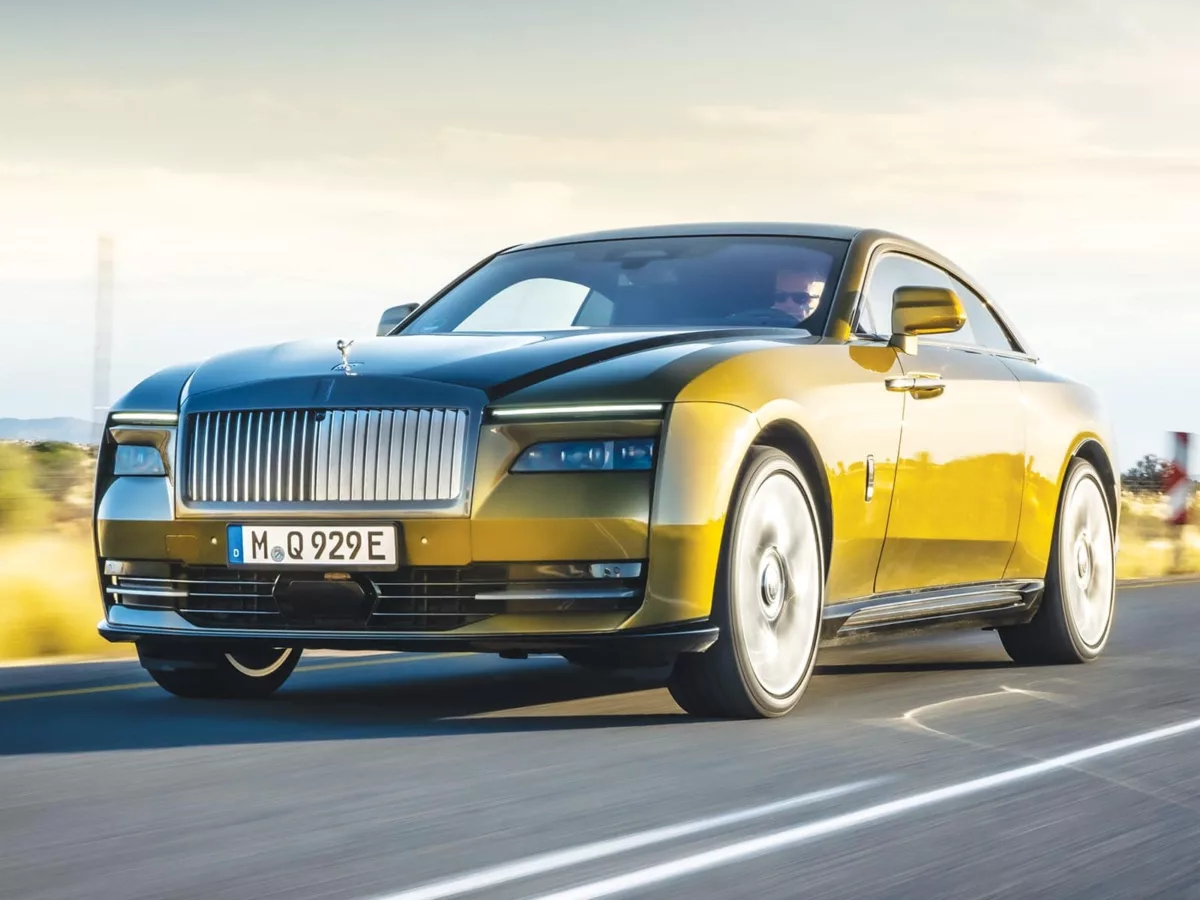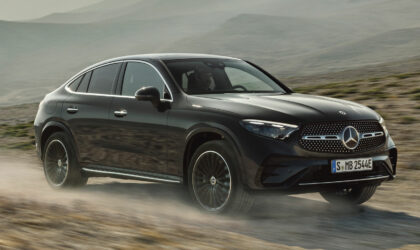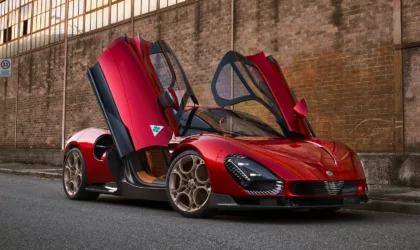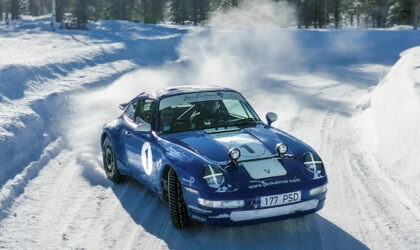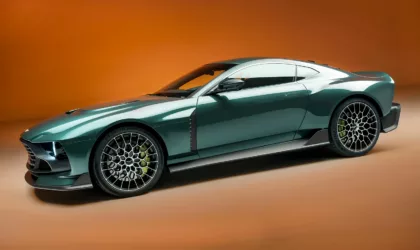The advent and growing acceptance of electric and hybrid technologies across the world is having an unexpected corollary – a new breed of behemoths is retaking centre stage. Today it is perfectly possible to own a large SUV or supercar without depleting the world’s carbon resources; luxury and speed are once again countenanced.
Rolls-Royce Spectre
Nobody is as happy at this turn of events as Rolls-Royce. The reputational damage of large V12 petrol engines was beginning to be felt even at the ultra-high end of the market. Understanding the coming storm, the wholly owned BMW subsidiary began a root and branch rebrand some ten years ago aimed at aggressively reinventing itself as relevant to a new, younger owner. The apogee of that process is the recently launched, all-electric Spectre, a full-sized coupe that shouts Rolls-Royce in both presence and detail yet also ticks the responsible transport box. It’s contemporary and hip as no Rolls-Royce could previously have claimed, simply by virtue of its drivetrain.
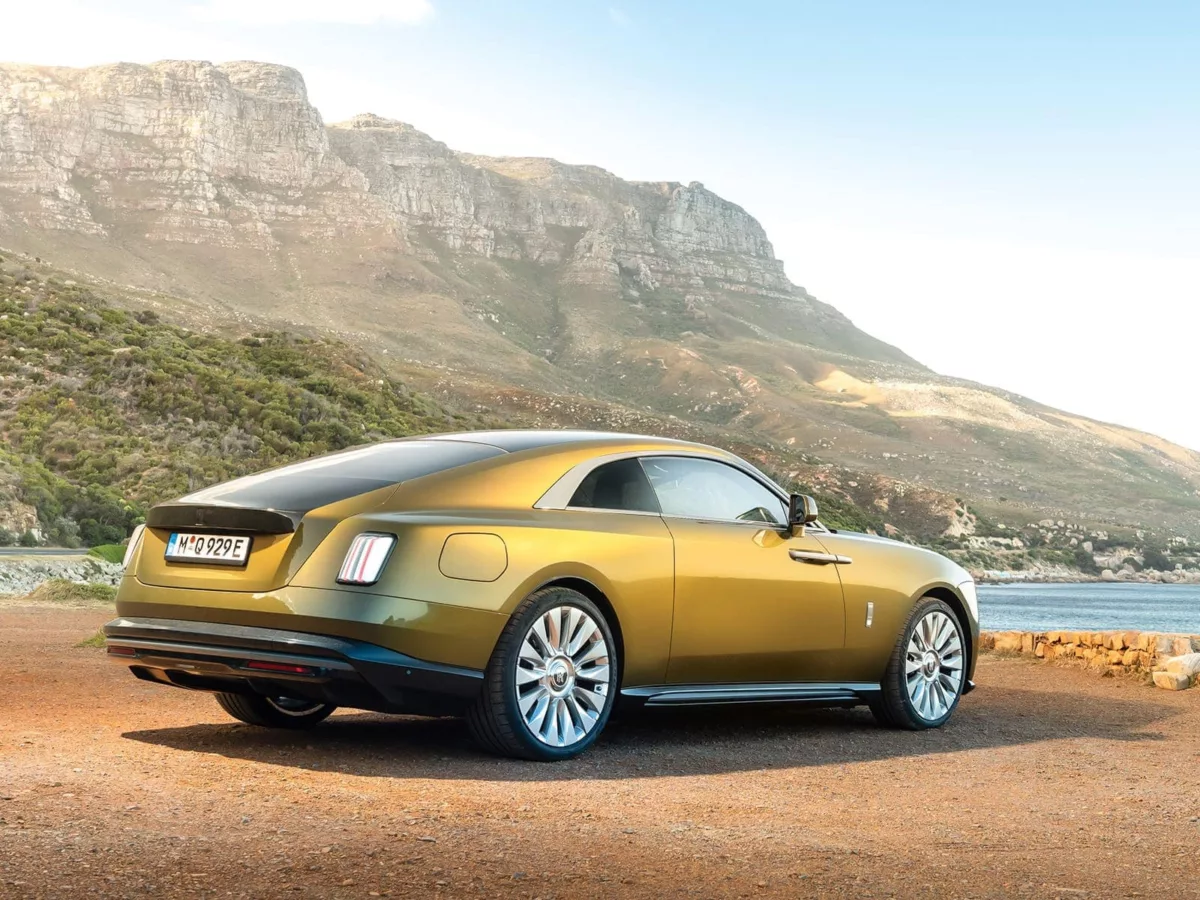
In many ways electric and Rolls-Royce were made for each other – effortless, silent progress has always been the marque’s raison d’être. ‘If you can’t hear the clock, something’s wrong’, was always the old adage. And so it is with Spectre, which continues the Rolls tradition of naming cars after supernatural elements. Two electric motors – one on each axle – combine to produce 415kW, ample to propel the three-ton two-door at a more than brisk clip. Revealing such figures was once regarded by the marque as gauche, but this is the new era and it openly reveals a 0-100kph time of 4.4 seconds, evidently enough to impress new money without alienating old.
The ride is exemplary, as expected, there’s four-wheel steering and a vast bank of batteries to ensure a cruising range of 500km. Standard too is the sense of opulence, in both design and execution. Spectre’s body, the work of Anders Warming and his team, harks back to an age of British nautical elegance, yet is also demonstrably cutting edge. And if the exterior suggests Art Deco grandeur, inside it’s Hollywood glamour – plush, traditional, almost ancestral. That’s something of a surprise; most electric cars today feature banks of screens and all manner of digital trickery. Rolls has created a clean, traditional facia with the emphasis on bespoke detailing rather than overt technology. Thick pile carpets, the trademark starry-night headliner now extending into the door panels, supremely comfortable seating, a steering wheel that is a work of art, and the softest of Muirhead leathers. It all contributes to a pervasive sense of classic couture, Dior not Westwood, familiar even as it is a la mode. Rolls-Royce deserve all the accolades that are being heaped upon them for Spectre.
Mercedes-AMG EQS 53
Rolls Royce may be stealing the electric limelight but it’s Mercedes-Benz that is substantively reordering the luxury car market. Stuttgart’s commitment to an electric future by 2025 is real; it has promised to have an electric vehicle in every segment it competes in by that date.
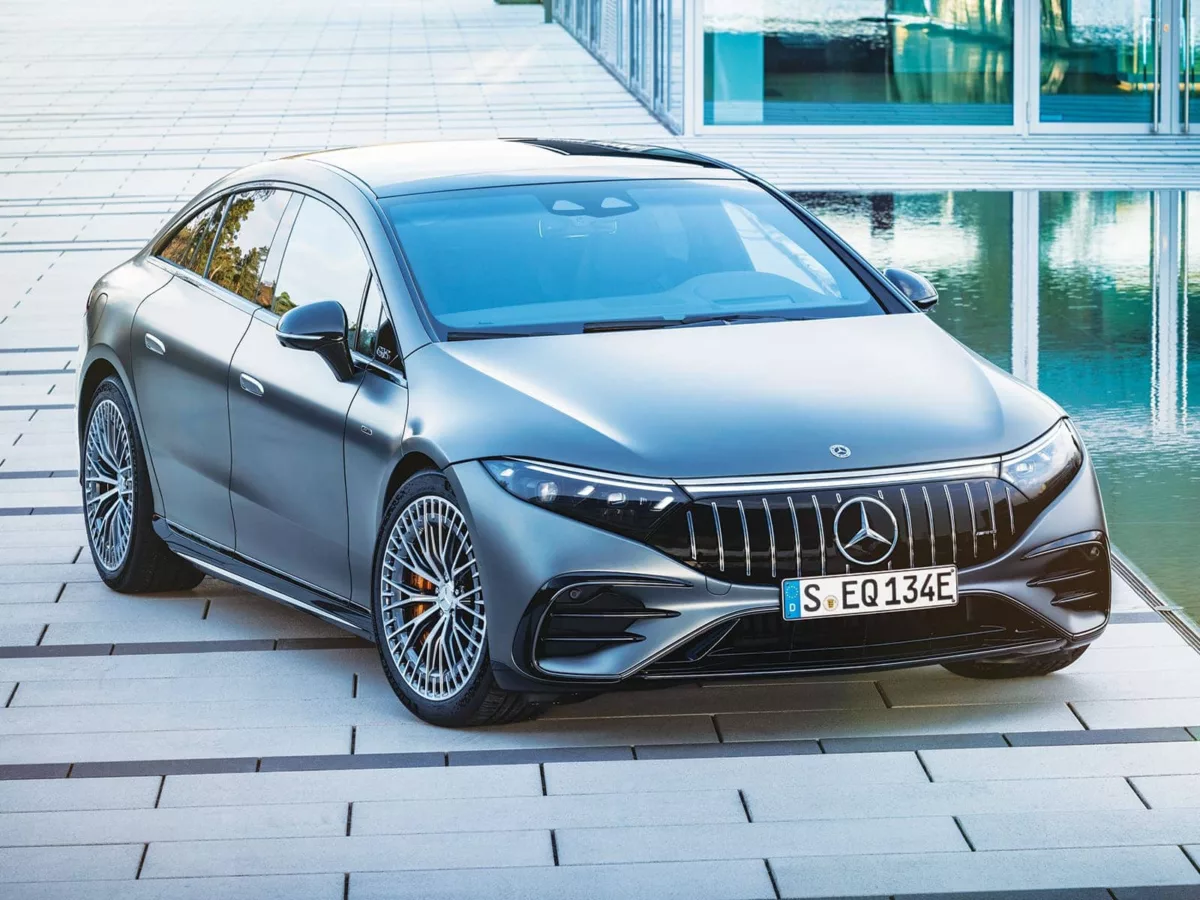
Including at the top-end. The company’s EQS 53 – big, imposing, panther-like, striking – is the silent sister to the iconic S-Class. As Benz’s flagbearer it offers a window into future luxury, and the news is good. Whisper quiet certainly, magnificently appointed obviously, the big EQS 53 is also delightfully quick. Just a prod of the accelerator pedal and Star Wars warp speeds are possible. Instantly. The lack of drama – you can pipe in fake engine noise if needs be – only adds to the sense of future shock. The largest infotainment screens in the business add theatre, though happily they are easy enough to use, gateways to the car’s myriad safety and entertainment features. In the back, space is the ultimate luxury, a veritable rugby pitch of foot, elbow and headroom. That all this is possible without a petrol station ever coming into the equation, is remarkable. The Benz’s electric cruising range is close to 600km, comfortably more than the current gold standard of 500km.
Porsche Cayenne E-Hybrid
Porsche has been slower to the electric lightshow, reluctant to alienate confirmed petrolheads in love with the sound and glory of their traditional Boxer engines. Nevertheless, Porsche’s strategy has been smart, creating an altogether new model to introduce electric cars to Porsche fans and then slowly introducing the new technologies to existing, iconic models. So it is that the barnstorming Taycan, one of electric’s true performance stars, is paving the way for other E-Performance models, Boxer and Cayman first, then SUVs Cayenne and Macan. Cayenne is of course the most important, Porsche’s bread and butter, beloved of the mink and manure belt who love it for its dynamism, space and versatility. As an electric car it should sell well; fewer owners are likely to mind as long as it stays fast, reliable and beautifully built. Until that day in 2026 Porsche offers up its Cayenne E-Hybrid as a foretaste, its 6-cylinder petrol engine combined with an electric motor. It has a pure electric range of just 90km but that’s not essentially the point; the combined petrol and electric power sources combine to make it remarkably powerful and agile.
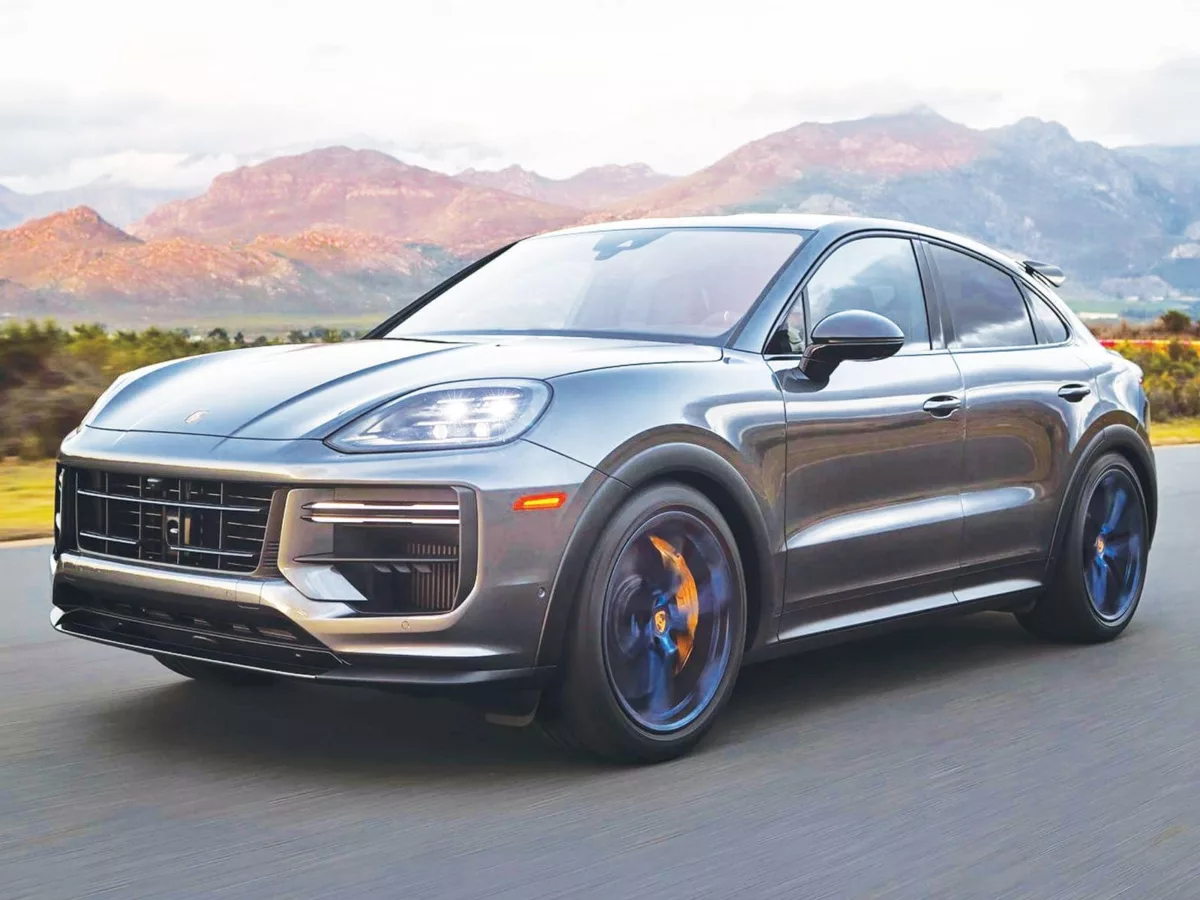
This latest Cayenne, revealed recently, has been given a substantial makeover, visually and under the skin. Front and rear aspects to the body have been modified and inside there is now the option of no less than three digital screens across the dashboard, the third extending to the passenger side. And underneath the skin Cayenne sees changes to its chassis, designed to make it an even better driving experience. That’s a tough ask – the big SUV is already the industry leader in terms of drivability. Tweaks include new suspension and shock absorber technology.
Size, apparently, does matter. Not just for safety and practicality but also, suggests research agency ScienceDirect, for psychological comfort. As our world gets ever more crowded, we ironically choose larger cars for their generous personal space. It’s a generational thing too, with Australia, America, Brazil and South Africa handing down preferences through the years. Whatever the motivation, manufacturers of large cars are breathing a sigh of relief – electric and hybrid has made their jobs far easier.
by Peter Frost
